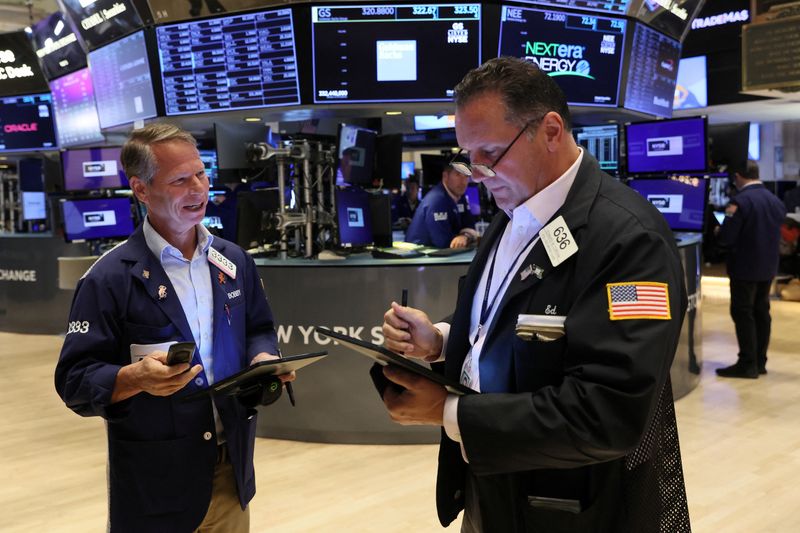After closing 2023 with more than 24% in gains under its belt, the S&P 500 resumed its bull run with an equally strong momentum this year. As was the case so far, the primary drivers of this rally are the technology giants thriving on the current AI boom, alongside growing optimism about anticipated interest rate cuts.
Goldman says S&P 500 expensive, but not too much
As the US stock market continues its relentless upward march, the price-to-earnings (P/E) ratio of the equal-weight S&P 500 (SPW) has escalated to 17x, positioning it in the 92nd percentile since 1985, Goldman Sachs (NYSE:GS) strategists highlighted in a recent note,
According to their top-down analysis, the SPW's P/E ratio is currently trading 13% above what they consider its fair value of 15 times.
For the SPW's P/E multiple to justify its present level near 17 times, equity investors would presumably have to base their assumptions on several optimistic economic conditions.
These include real yields dropping to approximately 0.5% from the current 1.9%, a 1.5 percentage point decrease in unemployment from its current rate of 3.9%, or a 15% rise in near-term earnings per share (NTM EPS) estimates, among other potential scenarios.
But despite this perceived overvaluation, historical patterns suggest that the equal-weight S&P 500 has a tendency to continue its upward trajectory in the 3-, 6-, and 12-month periods following such assessments, “albeit with below-average returns,” strategists noted.
“In 15% of months when the SPW traded 10-20% above modeled fair value, the SPW went on to return 2% in the subsequent 6-month period, compared with the average 6-month return of 7%,” they wrote.
“The hit rate of positive returns dropped to 58%. The forward signal for the cap-weighted S&P 500 is consistent with the equal-weighted S&P 500.”
Overvaluation phases in the SPW can last up to a year and usually have little impact in a robust economic climate. The SPW's P/E ratio was flagged as overvalued by 10% in February, Goldman’s team pointed out.
Historical analysis shows that, since 1990, it typically took four months from such a designation to reach maximum overvaluation. In particular, the only instances with negative returns after six and twelve months were during 2001 and 2007, coinciding with economic recessions, whereas other periods saw the market environment adjust to support these valuations.
S&P 500 forecast for 2024
Amidst this ongoing rally, the S&P 500 has notched more than a dozen all-time highs, demonstrating robust momentum of the market despite the highest interest rates seen in more than two decades.
After rising 0.9% on Wednesday, the benchmark index now sits at 5,248, marking its latest record closing level.
Despite such strong gains, there are more of those on Wall Street who believe that the market has more upside room.
On Thursday, a team of strategists at RBC (TSX:RY) Capital Markets raised their year-end S&P 500 target from 5,150 to 5,300, marking an 11% rise from the December 2023 closing numbers, and roughly 1% from the last closing price.
“We consider our price target to be a signaling mechanism for our overall message on the potential direction of the US equity market from here. It’s a compass, not a GPS,” strategists noted.
“The story we see in the data today is that the strong move observed in the S&P 500 so far this year has been deserved, and a rational case can be made for additional upside from here,” they said.
However, similar to Goldman’s observations, RBC’s analysis suggests that achieving further gains could become more challenging, indicating that the market may need to pause.
